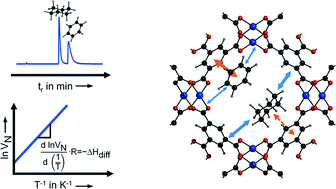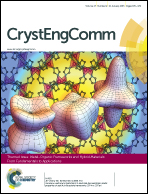The Lewis acidic and basic character of the internal HKUST-1 surface determined by inverse gas chromatography†
Abstract
Metal–organic frameworks (MOFs) have demonstrated great utilizability in separation applications, as in the separation of small volatile compounds via gas chromatography (GC). In the present work, HKUST-1 (Hong Kong University of Science and Technology), one of the best investigated MOFs, is used as a stationary phase for the gas chromatographic separation of various analytes possessing different modes of interaction due to their differences in polarity and the presence of free electron pairs. The system was investigated by inverse gas chromatography (IGC) to demonstrate in general how MOF materials can be quantitatively and qualitatively characterized in respect to their Lewis basic and acidic properties. Applying IGC theory, the investigation of the separation problem of benzene and its completely hydrogenated analogue cyclohexane was used to the determine the donor properties of the MOF linker benzene-1,3,5-tricarboxylic acid and the separation of diethyl ether, diisopropyl ether, tetrahydrofuran, and di-n-propyl ether to determine the acceptor properties of the coordinatively unsaturated sites of the copper(II)-secondary building unit (SBU), i.e. the nodal points of the MOF lattice.

- This article is part of the themed collection: Metal-Organic Frameworks and Hybrid Materials

 Please wait while we load your content...
Please wait while we load your content...